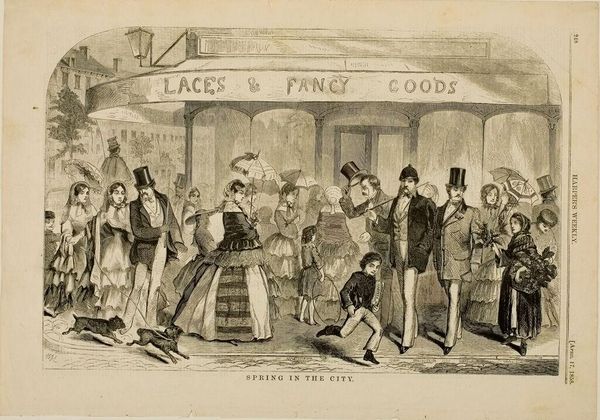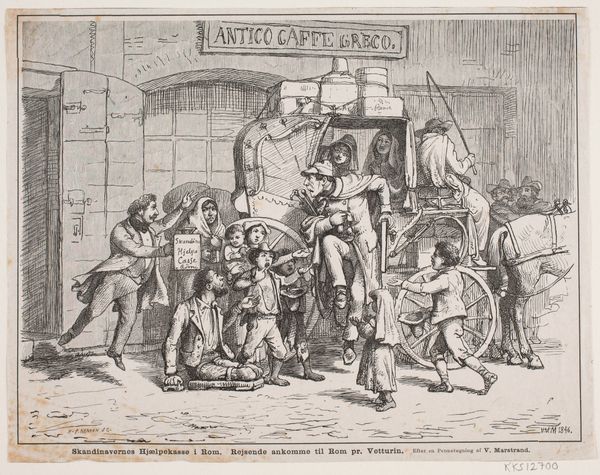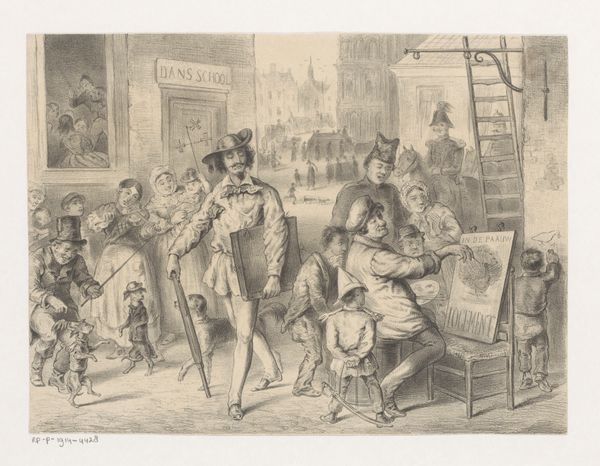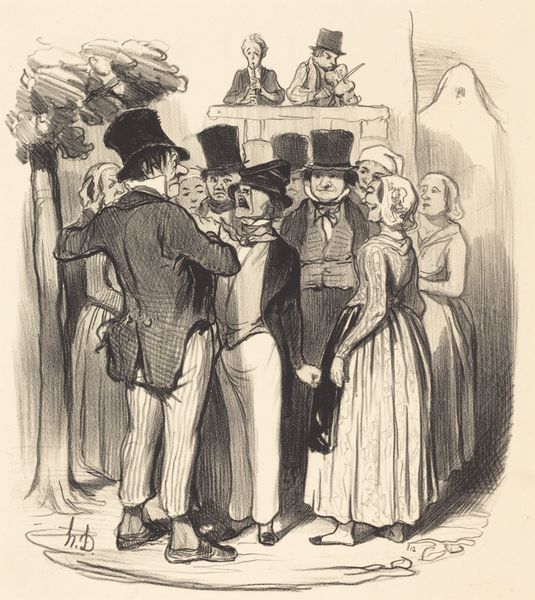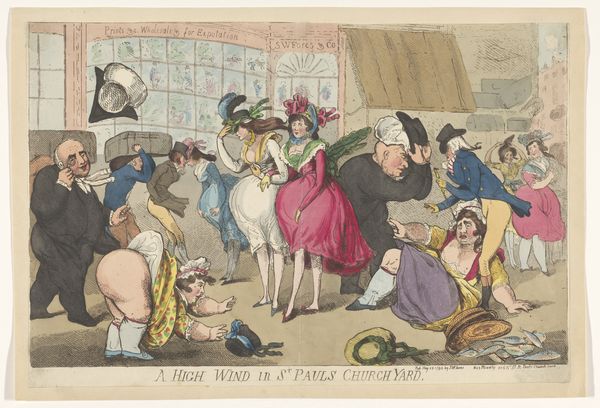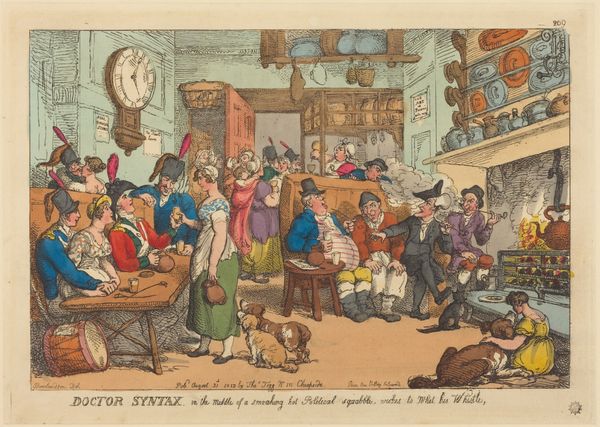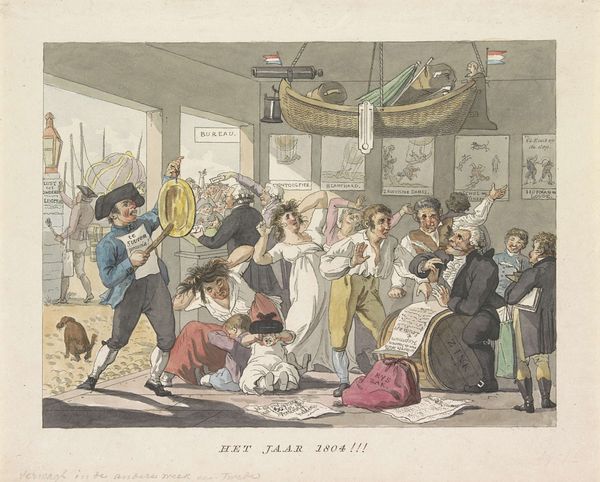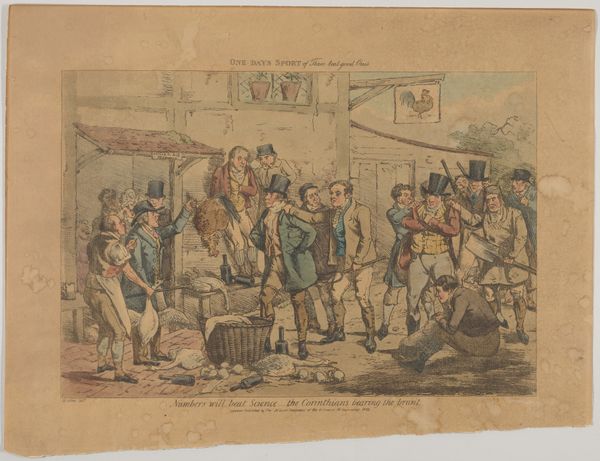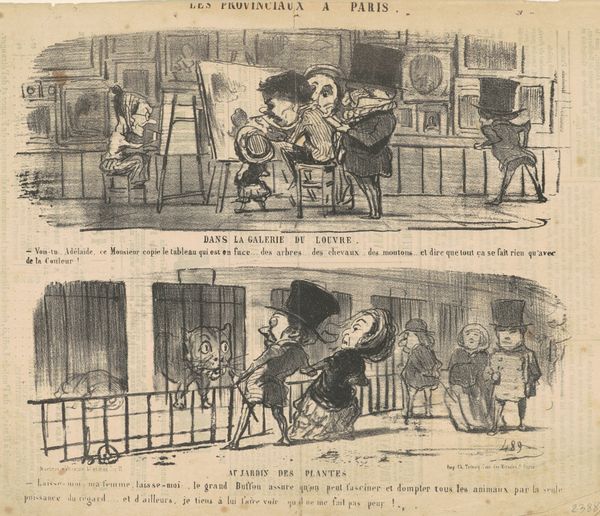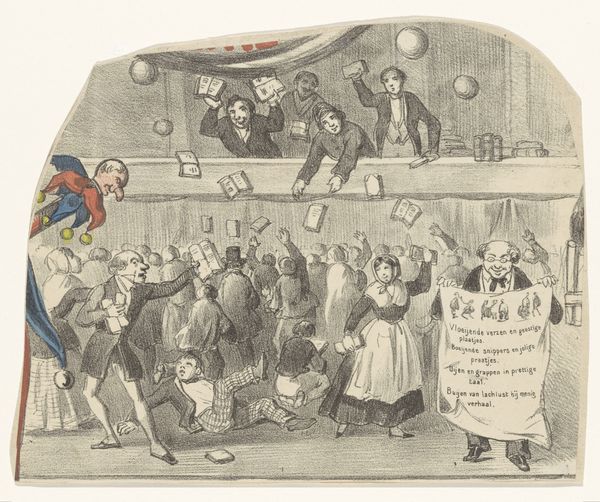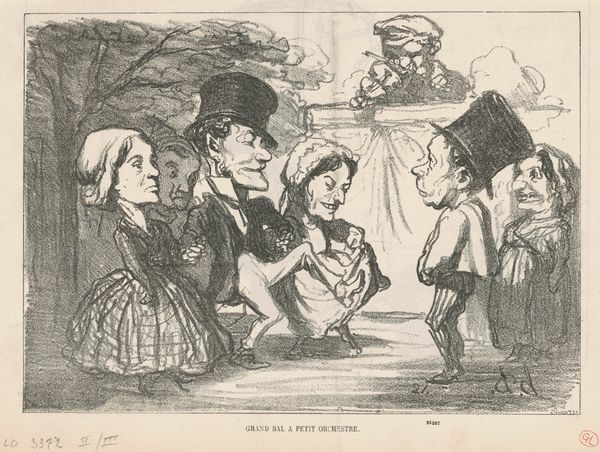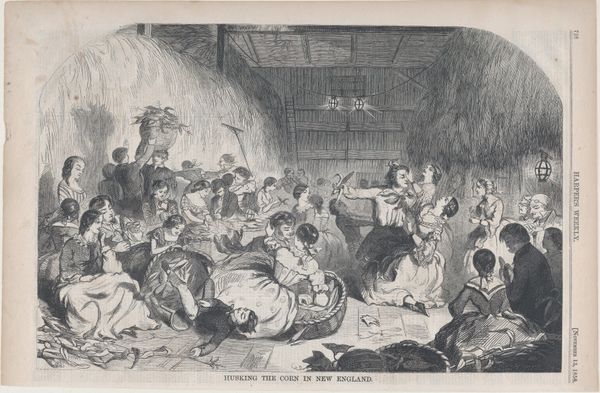
Spring in the City (from "Harper's Weekly," Vol. II) 1858
0:00
0:00
Dimensions: image: 9 1/8 x 13 3/4 in. (23.2 x 34.9 cm) sheet: 11 5/8 x 15 15/16 in. (29.6 x 40.5 cm)
Copyright: Public Domain
Curator: What a bustling scene. My first thought is how much everyone’s personal space is being violated. Look at this print, Winslow Homer's "Spring in the City," published in Harper's Weekly in 1858, capturing urban life through engraving and woodcut. The detail is remarkable. It is as if a flock of elegantly dressed individuals found themselves trapped between heavy curtains in a narrow and badly illuminated shop interior. Editor: That’s a wonderfully claustrophobic description, almost Poe-esque. My response is less literary and more focused on how gender is performing in this “city spring”. It feels highly choreographed, right? Curator: Choreographed how? Editor: Well, observe the clear separation of genders. The men stand tall, stoic, guardians almost; women appear encumbered by their voluminous dresses and elaborate bonnets. And these fashions… they dictate not just appearance, but movement, access, even societal participation. They represent the limitations and expectations placed upon women within the Victorian city. How heavy must these layers of status have weighed on them? Curator: I love that perspective! And it makes me wonder if Homer subtly captured the very moment spring releases its energy. Notice that one small boy who clearly escaped from that burden, dashing through with unbridled joy as though shot from a slingshot! That very boy offers a spark of pure, uninhibited exuberance against the conformity all around him! A touch of fresh air and the promise of rebirth amidst social constraint? Editor: Precisely! That defiant, gleeful energy in that boy makes me wonder about what's missing and obscured. Look closely. Where are the working classes in this so-called 'city spring'? Or any visible signs of the labor sustaining this 'refined' scene? Curator: That’s a brilliant point! This snapshot omits so much, doesn't it? Perhaps revealing more about the aspirations of Harper's readership, about representing their social status, than faithfully portraying the full picture of 1850s urban existence. Editor: This drawing seems to be revealing a constructed reality as opposed to pure observation, the way an invisible, selective hand always frames history. Thank you for opening up new vistas of thought! Curator: Oh, the pleasure was all mine, particularly on a day that might need some more perspective!
Comments
No comments
Be the first to comment and join the conversation on the ultimate creative platform.
